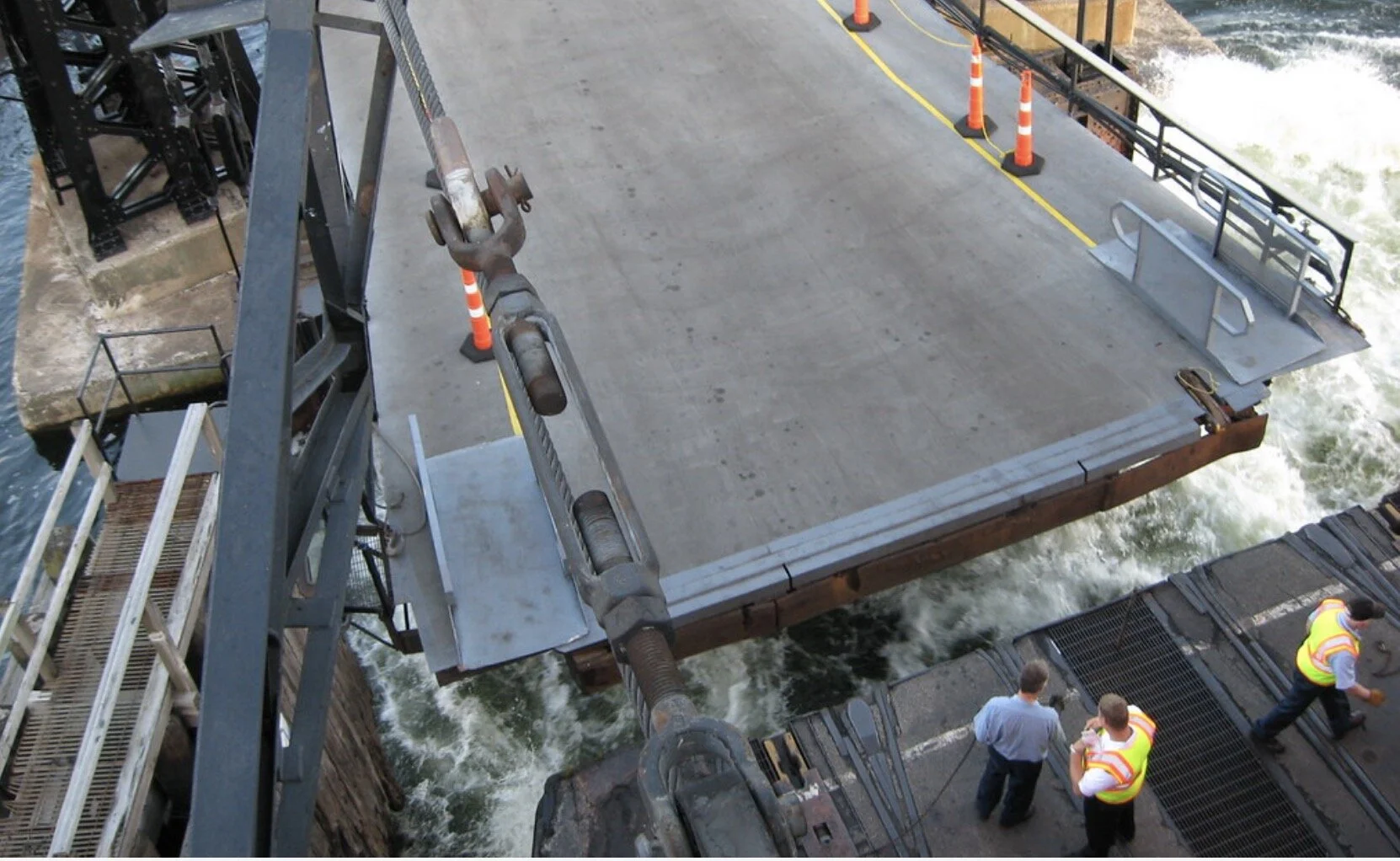Whine into Water
La Gomera is one of the smaller Canary Islands, and less easy to access. You get a plane to Tenerife and then the Fred Olsen car ferry to the island itself. It was on the return trip that I made the recording.
To allow the cars access to the belly of the ship, a large metal ramp was lowered from the boat and was resting on the metal runners of the jetty. The sea wasn’t rough but there was a swell and the wave motion caused the ramp to move to and fro. It was probably no more than a foot or two, but it was enough to let out a metal squeal. Metal on metal is often an unpleasant sound, but this was different. By some coincidence of angle, grease, sea water and whatever else, we were all treated to a series of harmonic arpeggios, as if someone was bowing the metal strings of a gigantic violin. I managed to capture a minute or so on my phone; and that was the start of what would become the four and half minute piece, ‘Aqua’.
We were up above the jetty, on an upper deck, and passengers were still making their way onto the boat from a gangway to the side. There was a lot of chatter in many languages, so the recording has two elements, the rich metal harmonics and a background burble of voices, seawash, distant traffic, and the hum of machinery. Despite the unwanted sounds in the recording, I reckoned that there was plenty to work on.
Back in the studio, I open up one of my go-to pieces of software; Metasynth. (see more about Metasynth in the Geek Room)
One of its most creative spaces is the image synth, which has the ability to analyse an audio recording and present it as a picture. In turn, each pixel will play a sine wave. Time runs from left to right, pitch from bottom to top. Green is to the left, red is to the right, and yellow in the centre of the stereo.
Once represented as separate tones, and graphically displayed, a vast number of possibilities become available. As you will hear the squeaks have come out pretty accurately, but the background burble has taken on a sound of its own. With so much low level information in that part of the recording, the software has made a stab at reproducing it but has come up with something else. Rather like the cook who butchers a piece of meat and tries not to waste anything, we’ll come back to the burble later. For now though it needs removing.
The result is good, just by deleting the lower parts of the picture, we are simply left with the tones of the metal harmonics. These will only truly be heard as clear tones like this at the end of the piece…
The picture too can be manipulated, just like any graphic design programme. Distortions are easily achieved and when playing string samples, start to give the sound real drama. Even if it is a little unruly at the moment.
The strength of the image room in Metasynth is its ability to play an enormous range of different waveforms (not just sine waves). In addition, there is a comprehensive sampler on board that means that every pixel can trigger a found sound, that has come from a recording and not generated electronically. Add to that, the ability to ‘read’ the picture in a wide range of octaves and scales (some utterly unplayable by a conventional instrument) and you have a vast selection of creative possibilities.
Getting back to the burble, that we put aside earlier, it’s clear that there is some interesting stuff going on here as well. That machinery hum represented by a solid green line on one pitch is obvious in the picture and will be easily removed, but the rest has some good stereo spread, and when read with different musical scales is going to offer some new ideas.
As in all the good picture editors, smudging and blurring is easily achieved, and so it is here. The soft start and end of the lines is the equivalent of a slow attack and release in an envelope shaper on a synth or sampler. By coincidence the picture is now starting to look like the sea!
Experimenting with different sounds and scales has come up with an atmospheric choral effect, which will be used sporadically throughout the piece.
With so many options available now, it just remains to shape it all into a coherent piece using a few other sources; a high head voice set way back in reverberation, and some sparse electronic synth sounds.
You can find Aqua in Latest Music, and the whole four minute piece on Spotify, Deezer, Amazon and other platforms.









